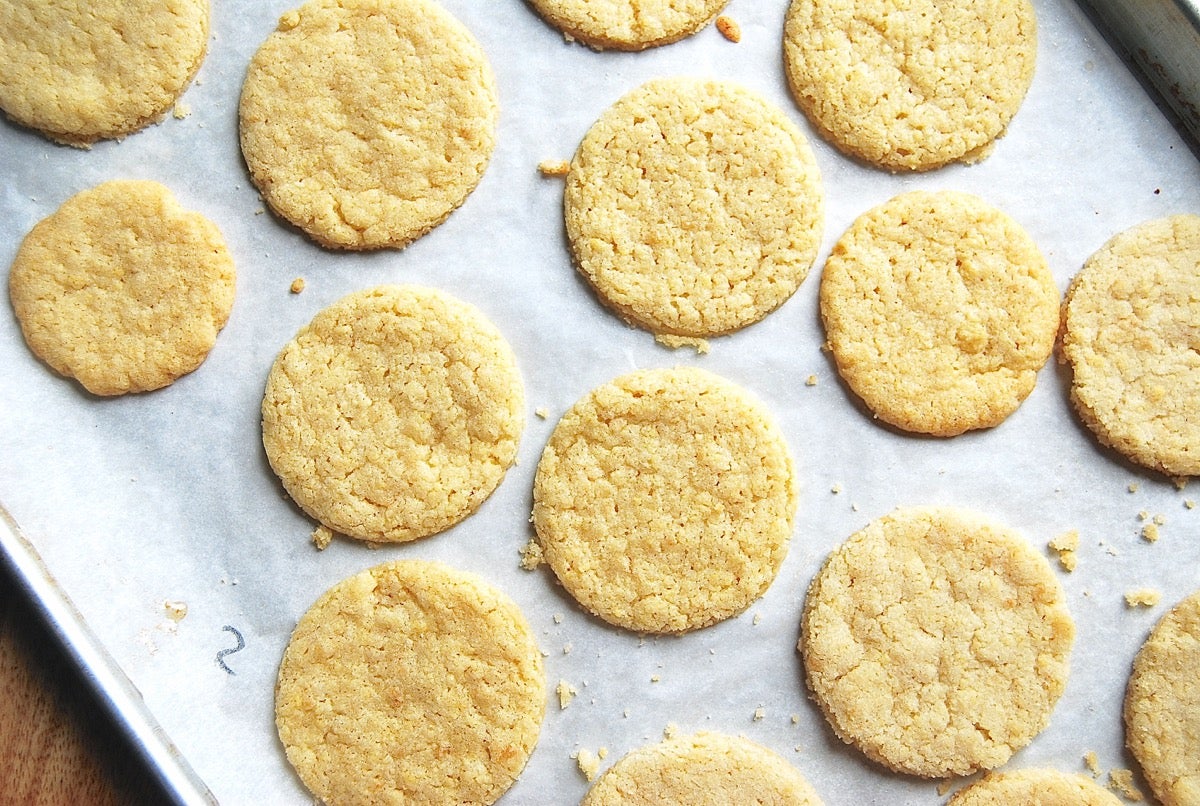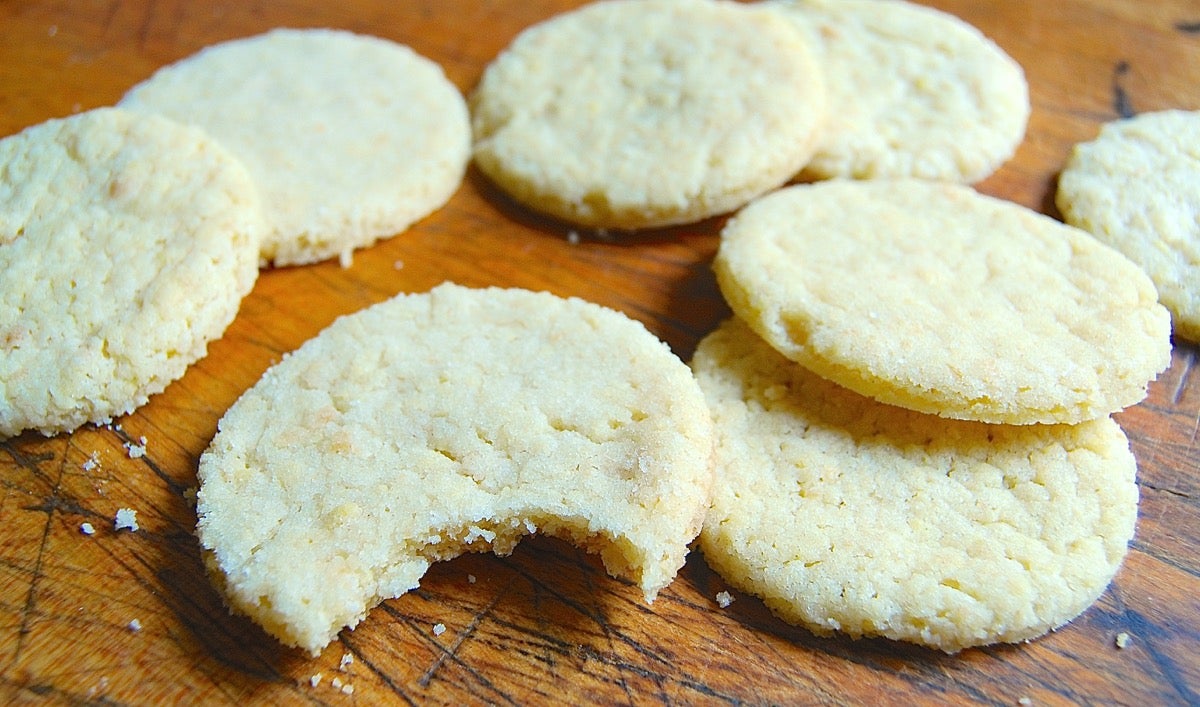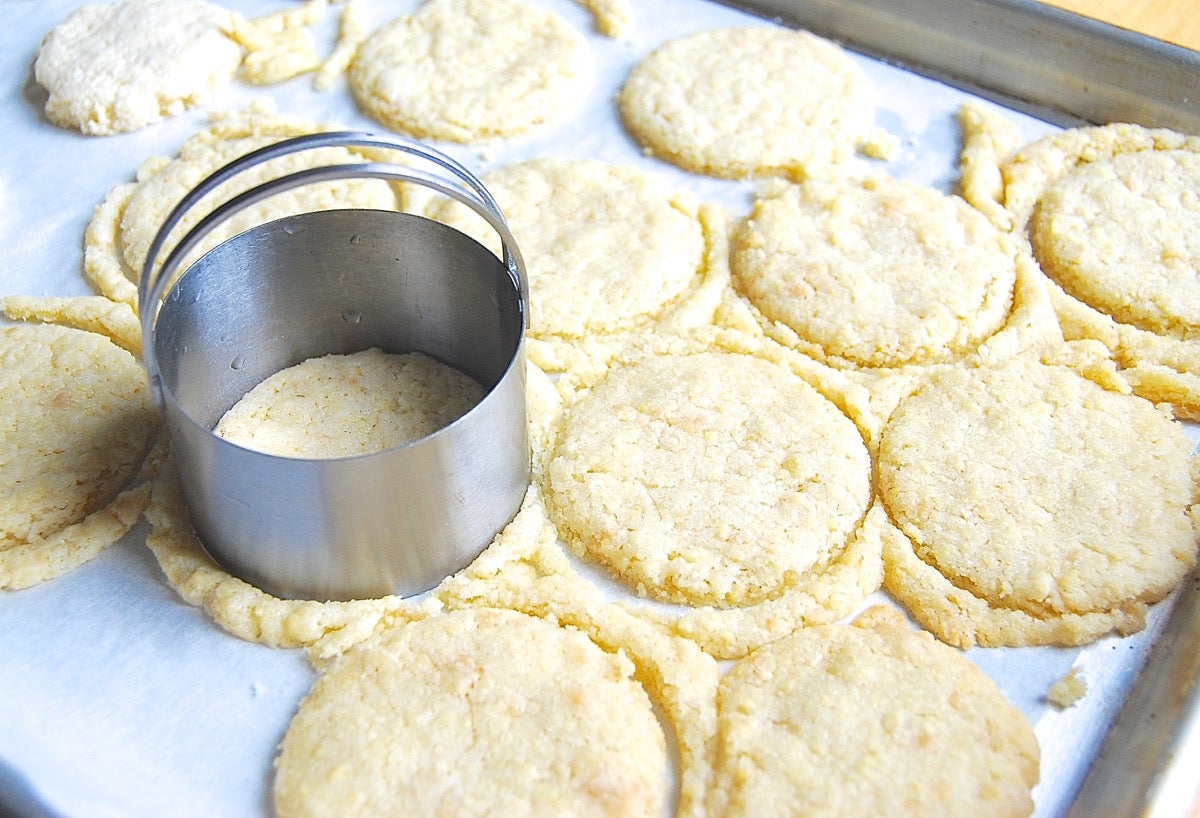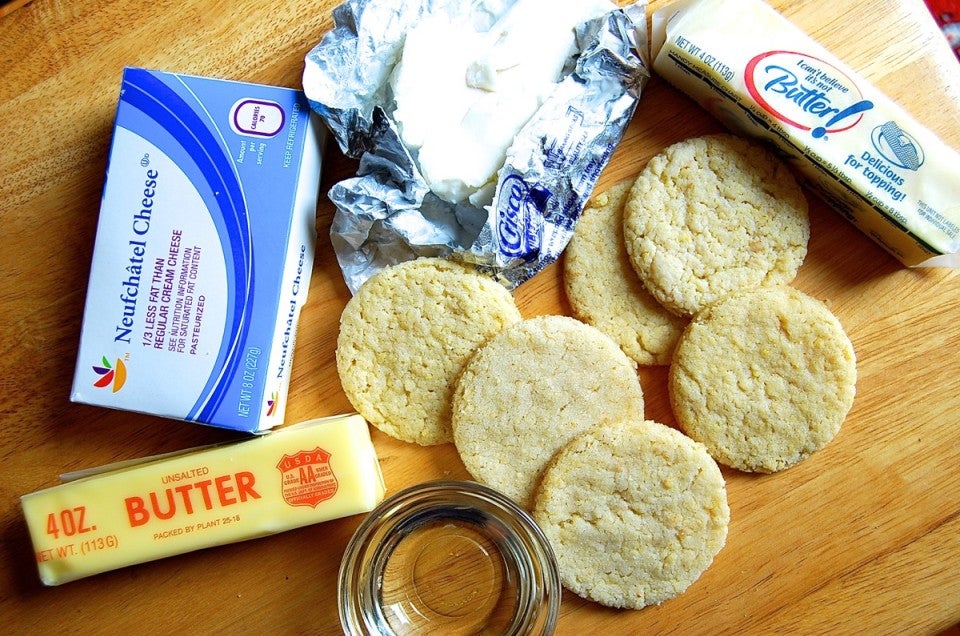


Your favorite sugar cookie recipe calls for butter. But you're baking for a dairy-free friend: can you use vegetable shortening instead?
Your Aunt Sue's handwritten sugar cookie recipe calls for "a stick of oleo" – i.e., margarine. Can you safely substitute butter?
Cookie chemistry to the rescue!
The answer to these two questions is yes, and yes. You won't end up with the exact same cookies, of course – but they'll taste good.
What about substituting other fats? Say, vegetable oil? Or even cream cheese?
Well, not so much.
So, how did the test work? I made our basic recipe for Sugar Cookies, a recipe that results in a typical flat, palm-sized sugar cookie that, depending on how long you bake it, the weather, and how you store it, will be a bit soft with crisp/crunchy edges; or soft all the way through.
The recipe calls for butter; or a butter/cream cheese combination, for a slightly puffier cookie. I tested it using butter; vegetable shortening; margarine ("I Can't Believe it's Not Butter"); low-fat cream cheese; the butter/cream cheese combination, and vegetable oil.
Fats were all measured by volume, not weight, since this is how most bakers will choose to do it. If your recipe calls for 1/3 cup butter and you want to try Crisco, you'll probably just scoop out 1/3 cup Crisco, right?
At the dough stage, all of the batches except the one made with vegetable oil looked pretty much the same; the oil batch was "wetter."
I scooped the cookies onto a parchment-lined baking sheet, using a tablespoon cookie scoop. I baked them for exactly 11 minutes in a 350°F oven; the recipe calls for a baking time of 10 to 12 minutes, so I split the difference.
The result?
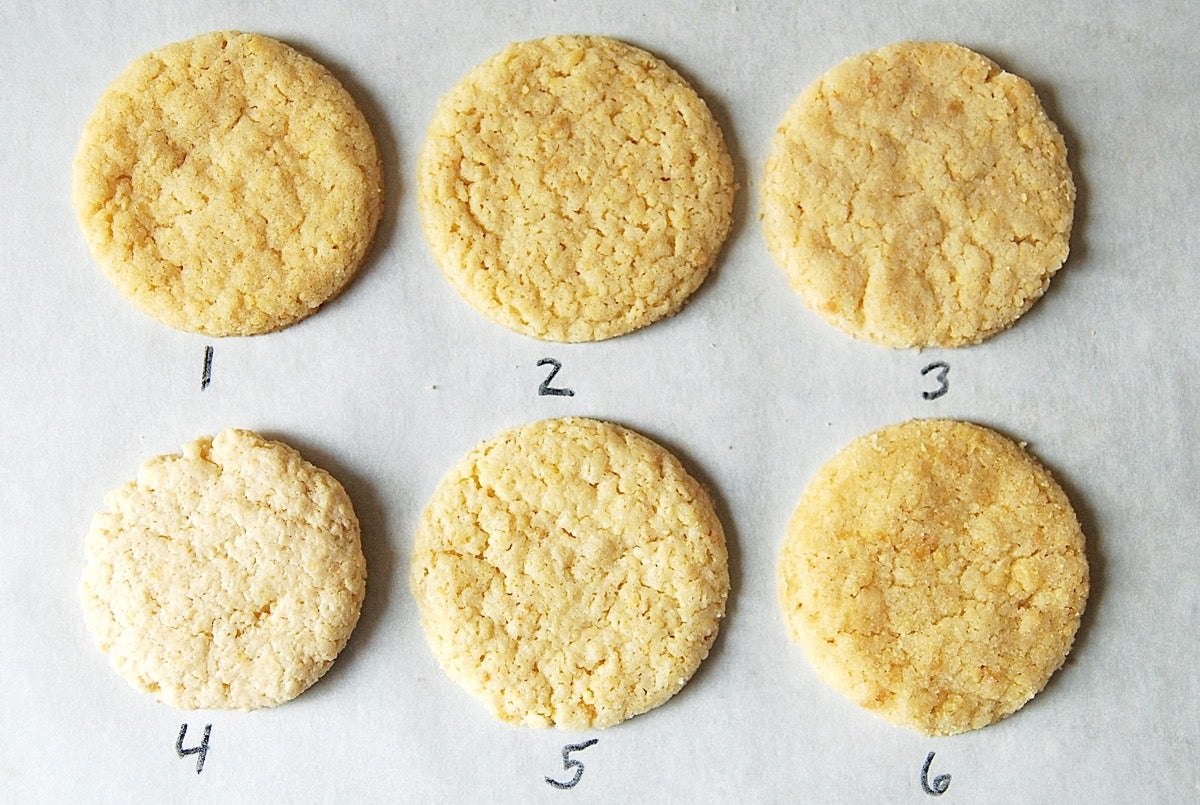
All of the cookies looked almost exactly the same, save for the cream cheese cookie (#4) – which was lighter-colored and didn't spread as much. The vegetable oil cookie (#6) was a bit darker.
The cookies made with butter, margarine, and the butter/cream cheese combination were a bit crunchy around the edges, and soft in the center. Those made with cream cheese were unappealingly hard; which makes sense, given the fact that cream cheese is lower fat than any of the other choices to begin with, and I used a lower-fat cream cheese to boot.
The cookies made with shortening were crunchier/crumblier. Unlike those made with butter/margarine, they weren't at all "bendy." Those made with vegetable oil were tender/crumbly, but unappealingly greasy.
Hooray for real butter! While taste is certainly subjective, I feel that butter-based sugar cookies have the best, most balanced flavor.
That said, the margarine cookies had a certain nostalgic appeal, flavor-wise. If you're a Boomer, your mom probably did a lot of baking with margarine, which was the low-cost butter alternative back then; at one point, it was even positioned as a healthy substitute for butter. When I tasted the margarine-based cookies, I experienced a big dose of déjà vu: Mom putting a plate of sugar cookies on the kitchen table after supper.
How about the rest of the fats? Vegetable shortening, as expected, yielded neutral sugar flavor. Cream cheese was rather odd and flat; while the cream cheese/butter combination tasted exactly like 100% butter – which makes sense, given the ratio was 4 parts butter to 1 part cream cheese.
And the vegetable oil cookies? YUCK. They tasted like old cooking oil. So not only were they greasy, they didn't taste good.
At the end of the day, I'd avoid sugar cookies made with either 100% low-fat cream cheese, or 100% vegetable oil.
But the remaining fats? The choice is yours to make; they all yield delicious cookies.
Oh, and by the way, were you wondering how I got all of my cookies to be so perfectly round?
Not via any special scooping or shaping skills!
I positioned the cookies too close together on the cookie sheet; as always, I was in a hurry. So when the big blobby cookies came out of the oven, having all run together, I used a large (2 3/4") biscuit cutter to trim off the misshapen edges.
And all those leftover edges? Perfect sweet nibbles for me and my extended family as we enjoyed a languid evening at my niece's softball game.
Consensus? The scraps from this cookie chemistry test are just fine – especially with ice-cold lemonade on a hot summer night at the ballfield.
See more tips, tricks, and techniques for making cookies in our other blog posts on cookie skills.


